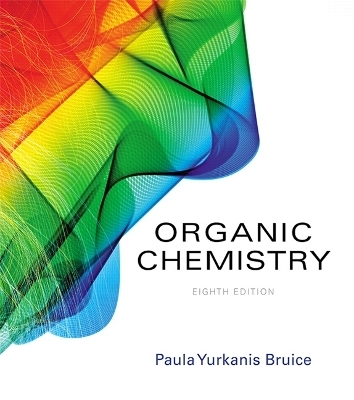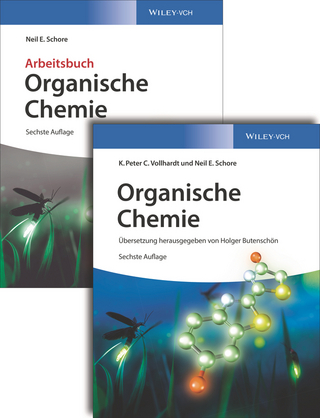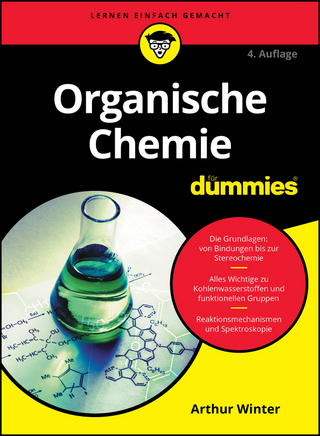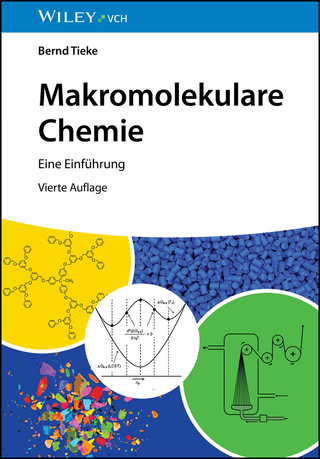
Organic Chemistry
Pearson (Verlag)
978-0-13-404228-2 (ISBN)
- Titel z.Zt. nicht lieferbar
- Versandkostenfrei innerhalb Deutschlands
- Auch auf Rechnung
- Verfügbarkeit in der Filiale vor Ort prüfen
- Artikel merken
Paula Bruice’s presentation in Organic Chemistry, Eighth Edition provides mixed-science majors with the conceptual foundations, chemical logic, and problem-solving skills they need to reason their way to solutions for diverse problems in synthetic organic chemistry, biochemistry, and medicine. The Eighth Edition builds a strong framework for thinking about organic chemistry by unifying principles of reactivity that students will apply throughout the course, discouraging memorization. With more applications than any other textbook, Dr. Bruice consistently relates structure and reactivity to what occurs in our own cells and reinforces the fundamental reason for all chemical reactions–electrophiles react with nucleophiles. New streamlined coverage of substitution and elimination, updated problem-solving strategies, synthesis skill-building applications and tutorials guide students throughout fundamental and complex content in both the first and second semesters of the course.
Also available as a Pearson eText or packaged with Mastering Chemistry
Pearson eText is a simple-to-use, mobile-optimized, personalized reading experience that can be adopted on its own as the main course material. It lets students highlight, take notes, and review key vocabulary all in one place, even when offline. Seamlessly integrated videos and other rich media engage students and give them access to the help they need, when they need it. Educators can easily share their own notes with students so they see the connection between their eText and what they learn in class – motivating them to keep reading, and keep learning.
Mastering combines trusted author content with digital tools and a flexible platform to personalize the learning experience and improve results for each student.Built for, and directly tied to the text, Mastering Chemistry enables an extension of learning, allowing students a platform to practice, learn, and apply outside of the classroom.
Note: You are purchasing a standalone book; Pearson eText and Mastering Chemistry do not come packaged with this content. Students, ask your instructor for the correct package ISBN and Course ID. Instructors, contact your Pearson representative for more information.
If your instructor has assigned Pearson eText as your main course material, search for:
• 0135213703 / 9780135213704 Pearson eText Organic Chemistry, 8/e -- Access Card
OR
• 0135213711 / 9780135213711 Pearson eText Organic Chemistry, 8/e -- Instant Access
If your instructor has assigned Mastering Chemistry for your course, search for:
0134048148/9780134048147 Organic Chemistry Plus MasteringChemistry with eText -- Access Card Package, 8/e
Package consists of:
0134074661 / 9780134074665 MasteringChemistry with Pearson eText -- ValuePack Access Card -- for Organic Chemistry, 8/e
013404228X / 9780134042282 Organic Chemistry, 8/e
After graduating from the Girls' Latin School in Boston, Paula Bruice earned an A.B. from Mount Holyoke College and a Ph.D. in chemistry from the University of Virginia. She then received an NIH postdoctoral fellowship for study in the Department of Biochemistry at the University of Virginia Medical School and held a postdoctoral appointment in the Department of Pharmacology at Yale Medical School. Paula has been a member of the faculty at the University of California, Santa Barbara since 1972, where she has received the Associated Students Teacher of the Year Award, the Academic Senate Distinguished Teaching Award, two Mortar Board Professor of the Year Awards, and the UCSB Alumni Association Teaching Award.
PART 1: AN INTRODUCTION TO THE STUDY OF ORGANIC CHEMISTRY
1. Remembering General Chemistry: Electronic Structure and Bonding
2. Acids and Bases: Central to Understanding Organic Chemistry
TUTORIAL: Acids and Bases
3. An Introduction to Organic Compounds: Nomenclature, Physical Properties, and Structure
PART 2: ELECTROPHILIC ADDITION REACTIONS, STEREOCHEMISTRY, AND ELECTRON DELOCALIZATION
TUTORIAL: Using Molecular Models
4. Isomers: The Arrangement of Atoms in Space
TUTORIAL: Interconverting Structural Representations
5. Alkenes: Structure, Nomenclature, and an Introduction to Reactivity • Thermodynamics and Kinetics
TUTORIAL: Drawing Curved Arrows
6. The Reactions of Alkenes • The Stereochemistry of Addition Reactions
7. The Reactions of Alkynes • An Introduction to Multistep Synthesis
8. Delocalized Electrons: Their Effect on Stability, pKa, and the Products of a Reaction • Aromaticity and Electronic Effects: An Introduction the Reactions of Benzene
TUTORIAL: Drawing Resonance Contributors
PART 3: SUBSTITUTION AND ELIMINATION REACTIONS
9. Substitution and Elimination Reactions of Alkyl Halides
10. Reactions of Alcohols, Ethers, Epoxides, Amines, and Sulfur-Containing Compounds
11. Organometallic Compounds
12. Radicals
TUTORIAL: Drawing Curved Arrows in Radical Systems
PART 4: IDENTIFICATION OF ORGANIC COMPOUNDS
13. Mass Spectrometry; Infrared Spectroscopy; and UV/Vis Spectroscopy
14. NMR Spectroscopy
PART 5: CARBONYL COMPOUNDS
15. Reactions of Carboxylic Acids and Carboxylic Acid Derivatives
16. Reactions of Aldehydes and Ketones • More Reactions of Carboxylic Acid Derivatives
17. Reactions at the α-Carbon
TUTORIAL: Synthesis and Retrosynthetic Analysis
PART 6: AROMATIC COMPOUNDS
18. Reactions of Benzene And Substituted Benzenes
19. More About Amines • Reactions of Heterocyclic Compounds
PART 7: BIOORGANIC COMPOUNDS
20. The Organic Chemistry Of Carbohydrates
21. Amino Acids, Peptides, and Proteins
22. Catalysis in Organic Reactions and in Enzymatic Reactions
23. The Organic Chemistry of the Coenzymes, Compounds Derived from Vitamins
24. The Organic Chemistry of the Metabolic Pathways
25. The Organic Chemistry of Lipids
26. The Chemistry of the Nucleic Acids
PART 8: SPECIAL TOPICS IN ORGANIC CHEMISTRY
27. Synthetic Polymers
28. Pericyclic Reactions
Appendices
I. pKa Values
II. Kinetics
III. Summary of Methods Used to Synthesize a Particular Functional Group
IV. Summary of Methods Employed to Form Carbon-Carbon Bonds
V. Spectroscopy Tables
VI. Physical Properties of Organic Compounds
VII. Answers to Selected Problems
| Erscheinungsdatum | 01.06.2016 |
|---|---|
| Sprache | englisch |
| Maße | 282 x 277 mm |
| Gewicht | 3293 g |
| Themenwelt | Naturwissenschaften ► Chemie ► Organische Chemie |
| ISBN-10 | 0-13-404228-X / 013404228X |
| ISBN-13 | 978-0-13-404228-2 / 9780134042282 |
| Zustand | Neuware |
| Informationen gemäß Produktsicherheitsverordnung (GPSR) | |
| Haben Sie eine Frage zum Produkt? |
aus dem Bereich


